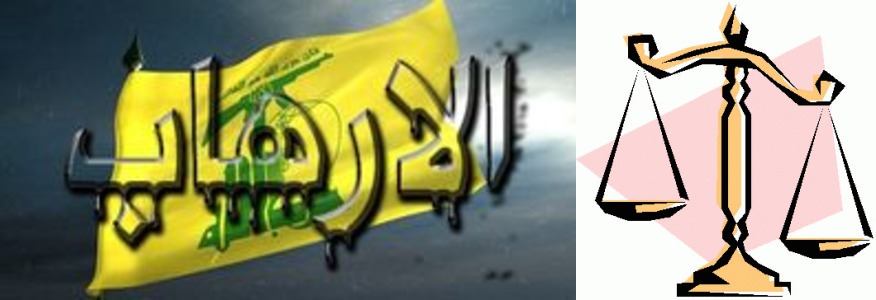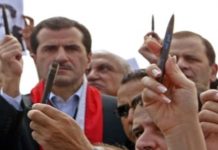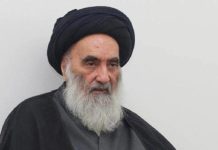إسرائيل تتحرك لتفكيك حزب الله العمود الفقري لإيران – فهل تنجح؟
تقرير من موقع معاريف/31 تشرين الأول/2024 (ترجمة موقعي المنسقية وغوغل)
Israel moves to dismantle, Hezbollah, Iran’s backbone – is it working? Expert answers
Maariv/October 31/2024
Mideast expert reveals dramatic drop in Hezbollah’s capabilities in daily launches, while mysterious disappearance of Quds Force commander signals deeper crisis in Tehran. Professor Amatzya Baram, an expert in Middle East and Persian Gulf Studies, spoke with Maariv on Monday and raised significant points about Hezbollah’s capabilities and Iran’s policy regarding the use of precise long-range missiles. “Hezbollah operatives are doing everything they can except for one thing – using the heavy and precise strategic missiles,” noted Baram. He estimated that the Iranians have been deliberately preserving these missiles and directing Hezbollah not to launch them.
“It’s important for the Iranians that we feel the threat of missiles above our heads. Now, the Iranians are in direct confrontation with us, not through proxies. The Iranians don’t know where the confrontation will develop, so it’s very important to them that Hezbollah preserves its precise long-range strategic missiles. According to their view, if Israel knows these missile threats exist – it will act with extra caution compared to if Hezbollah didn’t have these weapons.”
According to him, while Hezbollah operates many tools, including drones, missiles, and rockets, these are limited in their range and barely reach significant distances, like Tel Aviv. “In my opinion, they have few heavy rockets left for long ranges – they can reach the Krayot, Acre, Nahariya, and even Carmiel, but struggle to reach Haifa and deeper into the country. In practice, the scope of launches they carry out is significantly lower than IDF estimates before the war broke out. The military thought that Iron Dome wouldn’t be able to keep up with the launch rate at all,” Baram claimed.
“The IDF’s pre-war assessment of Hezbollah’s launch rate was about 1,500 missiles per day – while today, there are about 200 Hezbollah launches toward Israel each day,” Baram added. “This fact indicates severe damage to the terrorist organization’s launch positions and manpower.” Baram emphasized that the ability to manage massive missile salvos is even more limited due to the lack of an organized command backbone and consistent coordination.
“The IDF has taken out about 3,000 Hezbollah field operatives, who were eliminated or wounded. We severely hit operators and the command structure, but there are still terrorist cells of the organization that can independently operate missiles and drones. As we see, they are capable of sending missile salvos. This action shows some degree of coordination between Hezbollah cells,” he said.
Iran’s control over Hezbollah
Baram pointed to another trend in the organization – in recent months, there has been disruption in Iran’s control over Hezbollah. “The Iranians are struggling to regain control over the organization and its details, including military mechanisms,” he said, “Part of the Iranian command in Lebanon and Syria, including Quds Force officers, were hit. This fact made it difficult to transfer ammunition to Hezbollah and created gaps in command. Among those eliminated was the deputy commander of the Quds Force, who directly supervised Hezbollah and particularly the transfer of weapons from Syria to Lebanon.
Thus, it’s not surprising that the Iranians are facing difficulties in trying to concentrate and command Hezbollah.” However, he estimated that Iran may try to reorganize Hezbollah over the coming months, build a strong command structure, and increase its grip. “This is the time to exploit the disruptions and strike the organization as much as possible,” Baram argued. According to him, it’s important to hit command structures while Iranian forces are undergoing reorganization.
Professor Baram added interesting information about the Quds Force’s struggle with the assassinations of senior command, which has undermined its activities and caused fear of crisis. “Recently, Iran has been dealing with unclear internal challenges in the Quds Force. Ismail Qaani, commander of the Quds Force, disappeared mysteriously, and for a certain period there was concern that he was either eliminated or suspected of treason. He reappeared publicly at the memorial ceremony for the eliminated Quds Force deputy, but then disappeared again.
There’s a feeling that the Quds Force is undergoing significant structural changes.”Baram concluded by saying this situation has delayed Hezbollah’s reorganization and emphasized the importance of attacking Hezbollah in its current state, aiming to disrupt rehabilitation efforts. “Hezbollah is currently at its weakest point since Khamenei created it in 1982, and we must exploit this weakness.”
https://www.jpost.com/israel-news/article-826923
إسرائيل تتحرك لتفكيك حزب الله العمود الفقري لإيران – فهل تنجح؟
تقرير من موقع معاريف/31 تشرين الأول/2024 (ترجمة موقعي المنسقية وغوغل)
كشف خبير في شؤون الشرق الأوسط عن انخفاض كبير في قدرات حزب الله من حيث عدد الإطلاقات اليومية، بينما يشير اختفاء غامض لقائد فيلق القدس إلى أزمة أعمق في طهران. وفي حديثه مع “معاريف” يوم الإثنين، أوضح البروفيسور عمتسيا بارام، الخبير في دراسات الشرق الأوسط والخليج الفارسي، نقاطًا مهمة حول قدرات حزب الله وسياسة إيران فيما يتعلق باستخدام الصواريخ الدقيقة بعيدة المدى. وأشار بارام إلى أن “عناصر حزب الله يفعلون كل ما في وسعهم باستثناء شيء واحد – استخدام الصواريخ الاستراتيجية الثقيلة والدقيقة.” وقدّر أن الإيرانيين يحافظون عمدًا على هذه الصواريخ ويوجهون حزب الله لعدم إطلاقها. وأضاف، “من المهم للإيرانيين أن يشعرنا بوجود التهديد من الصواريخ فوق رؤوسنا. الآن، الإيرانيون في مواجهة مباشرة معنا، وليس عبر وكلاء. إنهم لا يعرفون إلى أين ستتجه المواجهة، لذلك من المهم لهم أن يحتفظ حزب الله بهذه الصواريخ الاستراتيجية بعيدة المدى. فهم يرون أنه إذا كانت إسرائيل تعلم بوجود هذا التهديد، فستتصرف بحذر أكبر.”
وأشار بارام إلى أنه على الرغم من امتلاك حزب الله أدوات متعددة مثل الطائرات بدون طيار والصواريخ والقذائف، إلا أن هذه الأسلحة محدودة في مداها ونادرًا ما تصل إلى مسافات بعيدة مثل تل أبيب. وقال، “أعتقد أن لديهم القليل من الصواريخ الثقيلة بعيدة المدى – التي يمكنها الوصول إلى الكرَيَوت، عكا، نهاريا، وحتى كرميئيل، لكنها تجد صعوبة في الوصول إلى حيفا وعمق البلاد.” وأضاف، “في الواقع، عدد الإطلاقات التي ينفذونها أقل بكثير مما توقعته تقديرات الجيش الإسرائيلي قبل اندلاع الحرب، حيث كانت التقديرات أن نظام القبة الحديدية لن يتمكن من مواكبة معدل الإطلاقات على الإطلاق.”
ووفقًا لتقديرات بارام، كان الجيش الإسرائيلي يتوقع أن يكون معدل إطلاق حزب الله حوالي 1500 صاروخ يوميًا، بينما اليوم هناك حوالي 200 إطلاق يوميًا نحو إسرائيل، وهو ما يشير إلى أضرار جسيمة في مواقع الإطلاق وفي القوى البشرية لدى التنظيم الإرهابي. وأكد بارام أن القدرة على إدارة دفعات كبيرة من الصواريخ محدودة أيضًا بسبب نقص في الهيكل القيادي المنظم والتنسيق المستمر. وقال: “لقد استهدف الجيش الإسرائيلي حوالي 3000 عنصر ميداني لحزب الله، تم القضاء عليهم أو إصابتهم، مما أثر بشكل كبير على هيكل القيادة. لكن لا تزال هناك خلايا إرهابية لدى الحزب يمكنها تشغيل الصواريخ والطائرات بدون طيار بشكل مستقل. وتُظهر العمليات الحالية أن هناك درجة من التنسيق بين خلايا حزب الله.”
السيطرة الإيرانية على حزب الله
وأشار بارام إلى تطور آخر داخل التنظيم – ففي الأشهر الأخيرة، ظهرت اضطرابات في السيطرة الإيرانية على حزب الله. وقال، “الإيرانيون يواجهون صعوبة في استعادة السيطرة على التنظيم وتفاصيله، بما في ذلك الآليات العسكرية.” وأضاف أن جزءًا من القيادة الإيرانية في لبنان وسوريا، بما في ذلك ضباط فيلق القدس، قد تأثروا، مما صعّب نقل الذخائر إلى حزب الله وأحدث ثغرات في القيادة. وكان من بين القتلى نائب قائد فيلق القدس الذي أشرف مباشرة على حزب الله وخصوصًا نقل الأسلحة من سوريا إلى لبنان، ما يفسر الصعوبات التي يواجهها الإيرانيون في محاولة تنظيم الحزب.
ورغم ذلك، توقع بارام أن إيران قد تحاول إعادة تنظيم حزب الله خلال الأشهر القادمة وبناء هيكل قيادة قوي وتعزيز سيطرتها عليه. وأوضح، “هذا هو الوقت المناسب لاستغلال الاضطرابات وضرب التنظيم قدر المستطاع.” وأضاف بارام أن من المهم استهداف الهياكل القيادية بينما تعيد القوات الإيرانية تنظيم نفسها. وكشف بارام عن معلومات مثيرة حول معاناة فيلق القدس من عمليات اغتيال لقادة كبار، مما أضعف نشاطه وأدى إلى حالة من القلق بحدوث أزمة داخلية. وأشار إلى اختفاء قائد فيلق القدس، إسماعيل قاآني، بشكل غامض، حيث كانت هناك مخاوف لفترة من الوقت بأنه قد تم القضاء عليه أو يُشتبه في خيانته. وعاد للظهور علنًا في مراسم تأبين نائب قائد فيلق القدس الذي قُتل، لكنه اختفى مرة أخرى بعد ذلك. ووفقًا لبارام، هناك شعور بأن فيلق القدس يمر بتغييرات هيكلية كبيرة. واختتم بارام حديثه بالقول إن هذا الوضع أخر إعادة تنظيم حزب الله، وأكد على أهمية مهاجمة التنظيم في حالته الحالية، بهدف تعطيل جهوده لإعادة البناء. وأضاف، “حزب الله في أضعف نقطة له منذ أن أسسه خامنئي في عام 1982، ويجب استغلال هذا الضعف”.






















